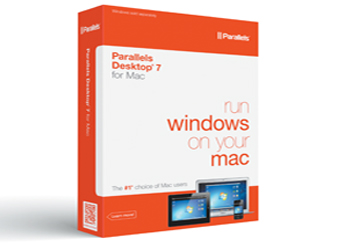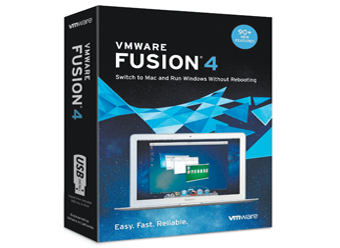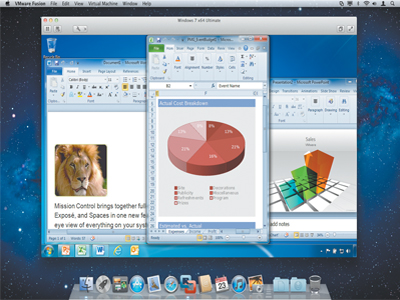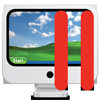 Call it entrepreneurial spirit or call it?overdue enlightenment, but Heidi Holmes?was in the mood for something different?when she founded Adage, a specialist?recruitment agency for mature-age?workers, early last year. Having left a 10-year career?to start her own business, it was a time for major?changes; little wonder that she also picked the time to?make the jump from Windows to a Mac.
Call it entrepreneurial spirit or call it?overdue enlightenment, but Heidi Holmes?was in the mood for something different?when she founded Adage, a specialist?recruitment agency for mature-age?workers, early last year. Having left a 10-year career?to start her own business, it was a time for major?changes; little wonder that she also picked the time to?make the jump from Windows to a Mac.
It wasn?t a completely smooth transition: Although?she ?adjusted? to Mac Mail and the Mac OS X?environment, Holmes says she drew the line at the?Mac version of Microsoft Office.
?I?m happy with the Mac, and the way it syncs?and looks after itself,? she explains. ?It took a period?of adjustment to get used to Mac Mail and not using?Outlook, although that works both ways: I don?t visit?Gmail anymore and I love that it?s all in the one spot.
 ?But I was entrenched in the Microsoft way, and?didn?t really see the advantage of learning the Mac?Excel and Word. It?s kind of the same, but I was more?proficient in the Windows version.?
?But I was entrenched in the Microsoft way, and?didn?t really see the advantage of learning the Mac?Excel and Word. It?s kind of the same, but I was more?proficient in the Windows version.?
Her ideal solution came quickly and easily: Her?web developers loaded her MacBook with VMware?s?Fusion tool, which would let her run Offi ce 2010 ? the?main applications in which she works ? alongside her?Mac applications on the same desktop.
The setup has served her well ever since, allowing?her to manage her business while enjoying the benefits?of the Mac platform. ?I?ve had no issues, and found it?really easy to run everything I need,? she says. ?I?m?quite functional with my laptop and my phone.?
HOLDING ONTO WINDOWS
With most Australians getting exposure to the?Windows world well before they potentially branch?out and get their own Macs, backwards compatibility?remains as popular now as it did, five years ago,?when Apple announced it would shift its architecture?to run on Intel CPUs that were equally capable of?running Windows.
Numerous upgrades later, the two market-leading?Windows-on-Mac applications ? VMware Fusion?and Parallels Desktop ? have progressed by leaps and?bounds, long ago cementing their position as must have?accessories for Mac switchers who want to bring?one or more key Windows applications over the wall?with them.
If you?re unfamiliar with the two applications, take?a moment to learn how they work: Both combine some?well-established technology ? desktop virtualisation ??with quite a lot of programming magic.
Desktop virtualisation creates a single logical?file on disk (although it may be physically split into?pieces to facilitate easier backup via Time Machine,?and faster loading) called a ?virtual machine? (VM).?The VM is, for all intents and purposes, a Windows?computer that is managed by a ?hypervisor? built into?Fusion or Parallels.
When Windows queries the environment it?s in?for information about the system it thinks it?s running?on, the hypervisor intercepts the calls and provides?the correct answers. As long as it?s kept happy and?gets enough CPU cycles and information when it?needs them, Windows keeps ticking along; think about ?how the stars of Inception worked to delude their?subconscious defences, and you?re not too far off.
The magic comes in the form of custom-written?drivers that tweak Windows to perform better in its?VM than it might normally do. Progressive updates?to both Fusion and Parallels have added ever-moresophisticated?drivers that do things like providing?smoother 3D graphics support; allowing the Windows?VM to access Mac resources like the iSight/FaceTime?camera and other USB-connected devices; delivering?seamless network access by piggybacking onto the?Mac?s internet and network connections; and more.
One nice trick is that the hypervisors enable drag-and-drop file sharing that transcends the boundaries?of the virtual machine to link the two environments.?For this reason, of course, it?s imperative that?Windows VMs be loaded with an updated antivirus?and security suite, so nasties can?t find their way?into your Mac through the hypervisor?s integration?features; if you?re concerned, you can also set up a?VM so it has no connections whatsoever with the?operating system it?s running on.

Opening Windows. Virtual machines such as VMware Fusion give you the ability to run Windows-only programs like Microsoft Project, Access and Internet Explorer.
Basic VM functionality was nailed down several?versions ago, and subsequent versions have focused?on adding new features that make Windows apps?behave more like Mac apps. For example, Parallels???Coherence? mode or Fusion?s ?Unity? mode make?the Windows desktop disappear, letting individual?Windows applications run in Mac-like windows on?the desktop. These features allow users to focus on?the task at hand regardless of whether they?re using?Mac or Windows apps.
The latest versions of the products ? Fusion 4?and Parallels 7 ? have been optimised for Mac OS X?10.7 Lion, adding support for features like full-screen?mode and Multi-Touch swipes, as well as the addition?of Windows applications to Lion-only features like?Launchpad and Mission Control. These are usability?more than functionality improvements, but they?burnish the edges of the Win-on-Mac environment?and offer an ever-so-carefully-integrated solution.
By erasing the arbitrary lines that used to make?Windows VMs stick out from the Mac desktop like a?sore thumb, these features maintain the appearance?of equity between Windows programs and Mac?applications. They can, however, have unintended?side effects: Since Windows programs are indexed?in Spotlight and can be launched with one click, it?s?entirely possible to inadvertently launch a Windows?application ? and find yourself ticking away the?minutes while the hypervisors load and Windows boots.
As the latest step in their never-ending quest to?justify repeated upgrades, the latest versions know?a few more tricks that may or may not be useful?for you. Windows? ?Aero? rich user interface is now?fully supported, as is Mac OS X?s underlying 64-?bit architecture. Backed with a legion of tweaks,?hypervisor performance is now said to impose nearly?no processor burden ? making many Windows games?run at or near full speed.
?It?s very much full of performance-driven?enhancements,? says Parallels ANZ general manager?Kevin Greely. ?Exhaustive benchmarking has shown?that virtualisation has come down to the point where?there?s so little (hypervisor) overhead that the word??overhead? doesn?t even matter anymore.?
The new version also offers a host of other?accoutrements: Parallels 7, for example, can now?run a guest instance of Mac OS X ? allowing for?testing of new applications in a secure, separate?environment that?s isolated from the host computer.?There?s support for 7.1 surround sound, faster pausing?and resuming of VMs and an interesting add-on in?the form of the Parallels Mobile application, which?lets users access their Mac and Windows desktops ??including streaming Flash video with sound ? from?their iPad, iPhone, or iPod touch.

Flash on an iPad. The $5.49 Parallels Mobile application lets users access their Mac and Windows desktops ? including streaming Flash video with sound ? from iOS devices.
For its part, VMware claims 90 new features in?Fusion 4, including optimised graphics drivers that?provide a 2.5x boost in 3D graphics speed. It can?also load Lion as a guest operating system in a VM,?resume suspended VMs faster than before, offers a?new App Unity feature for tight Lion integration,?updates USB and Bluetooth support to the latest?versions and provides an additional layer of security?through encryption and password protection of VMs.
?We?ve focused Fusion 4 generally around usability,??says David Wakeman, senior product line manager for?end-use computing with VMware. ?The overhead of?using desktop virtualisation is now quite low, so a lot of?features are designed around slick integration with Mac?OS X, so the apps look and feel and smell as much like?a Mac app as you can possibly get.
?That?s really important ? especially for new users?to Macs who are struggling to grapple with something?new. You don?t have to be a virtualisation geek to use?this product; you can be a mere mortal and make it?happen quickly.?
MACS AT WORK
Because they provide both Windows compatibility?and better performance than ever, current Windows?virtualisation solutions offer far more appeal than?their earlier versions. This would seem to make them?more acceptable within corporate environments,?where employers continue to dance a curious line?between sticking with their Windows bias and?embracing Macs.

Fitting In. Sally Farrow uses Parallels Desktop so her Mac fits into a Windows-only office environment.
Many businesses have found a compromise by?buying iMacs for their great form factor, then running?Windows on them using Boot Camp or by completely?wiping the drive and installing the operating system?from scratch. This provides Windows environments?with access to the iMac?s excellent and large screen,?and integrated form factor ? making it particularly?useful in space-constrained or public-facing?locations.
Yet just because you can run Windows on your?Mac doesn?t mean your employer will be too happy?about it: Despite their Windows-friendly nature,?recent figures suggest Macs are still pariahs in many?businesses. A recent study by Forrester Research,?for example, found that fully 41 percent of North?American and European companies still don?t allow?Mac-wielding users access to company resources.
Around half of the companies surveyed allowed?Mac users to access web-based email, with just?37 percent OK-ing internet access via Mac and?around one in five allowing use of Macs for hosted?application access, internal network access and native?email access. And just six percent said they would?install key corporate applications onto users? Macs.
Such results confirm?there?s still a long way?to go before Macs shake?off their reputation as?being incompatible?with the corporate?environment ? even as?growing normalisation?of bring-your-own?(BYO) computing?concepts have increased?the acceptability and?popularity of Macs within?the business world.
Sally Farrow found?out just how hard it can?be to overcome executive?scepticism when she?joined financial-services?firm YourShare.com?.au and suggested to the?directors that she would?prefer to use a Mac for?work. In a Windows-only?company, this was a hard?sell ? but Farrow leaned?on the availability of?dual-platform capabilities?to push her case over the?line.
At first, she used Boot?Camp to switch between?the two platforms ? and?was starting to regret her?decision.
?It really slowed?the machine down?massively,? she recalls,??because I had to change?so often. I was having to boot in and out of my?design programs on the Mac side, then load other?apps on the PC side. It was really messing with my?computer, which was so slow with Boot Camp that it?struggled.?

Parallels universe. Social media consultant Kate van der Voort moved to Parallels after becoming disillusioned with running Windows via Boot Camp.
Her solution was to invest in a copy of Parallels?Desktop ? and since then, she says, ?things have been?brilliant. I use both at the same time, all day?.
Sticking with the Windows version of Office not?only ensures she can exchange documents with?banks and other financial-services companies, but?has proved to be cheaper as well since the company?already had a site license for the Windows version;?the Mac one would have had to be bought separately.
Although the dual-OS technology is up for?it, these sorts of considerations can often lend?convincing weight to those who want to make the?case for bringing their own Macs to work. Some big?companies still maintain their opposition on any of?a number of grounds ? some of them rooted more?in policy and governance than legitimate technical?objections ? but Macs are continuing to grow in?popularity within small businesses, where sole traders?and small-business operators are often long-time Mac?users, or are steered to MacBooks by well-meaning?friends and associates.
For most, the transition is strange for a while?but quickly becomes a non-event. But it doesn?t?always go well, as Kate van der Voort of social-media?consulting firm Social Mediology found out.
A lifetime PC user, Van der Voort moved to?Macs last year after a client bought her the new?system. Things were rocky at fi rst: She had ?all sorts?of problems? syncing mail to her phone through?Outlook, for example, and had just bought Windows-only?applications including MYOB and GoToMeeting?s?GoToWebinar hosting software, which meant she?couldn?t really make the switch as she might have?liked to.
Van der Voort ended up installing a Windows?configuration using Apple?s Boot Camp, the third?and increasingly clunky option for those wanting to?run Windows on their Macs. Although it worked, she?quickly grew tired of rebooting her system between?Windows and Mac environments.
?I love the fact that I?ve got both Windows and?Mac on the same computer, but find it a hassle to?have to shut down and restart,? she says. ?Inevitably?I?ll be doing data entry in MYOB through Boot Camp,?then there are things I need from my email on the?Mac OS X side.?
Support through the local Apple Store has left?her ?blown away by their level of dedication and?willingness to help?, and she has stuck with her new?system despite the initial hurdles. Her recent purchase?of Parallels promises easier co-existence between?the two environments, although Van der?Voort has had other troubles including?the search for a replacement for Mac Mail?and sync problems with Outlook 2011.
?The only downfall with the Apple?Store is that if you ask how to do?something that uses anything that?s not?an Apple product, they?re not interested,??she says. ?I would love to be on a full?Mac solution, but for now I?m in this?precarious it?s-all-working situation.?
DEVELOPING A TRUST
One category of user that?s been?particularly eager to embrace Windows-on-Mac solutions is software developers,?among whom MacBooks have become?massively popular because they deliver the everyday?benefits of the Mac OS X environment but allow?multiple versions of Windows to be run within?VMware or Parallels VMs.
This facilitates development and testing of?applications for corporate Windows desktops, where?compatibility issues must be identifi ed and dealt with?long before applications are actually rolled out. With?a Windows-on-Mac solution in place, for example,?it?s possible for designers at web development house?Loud & Clear Creative to test their creations in all of?the desktop operating system configurations in which?they?re likely to be used.
?We use Parallels extensively for cross-browser?testing on the websites we build,? says Ben Beath, a?web developer with the Sydney and Melbourne-based?design house. Loud & Clear coders run two screens?side by side ? one with their Mac desktop, and the?other with Windows XP, Vista or 7 depending on the?application.
?We?re able to identify and replicate bugs quickly,?fix them in the code and then review the applied?updates instantly,? Beath says. ?Cross-browser testing?used to take us days; now, we simply have the different?test environments ready to deploy as required.?
This approach is particularly important when it?comes to Internet Explorer 9 ? the Windows-only?browser that is, despite declining popularity, still?used by about half of all Windows computers. Unlike?rivals Safari, Firefox and Opera, IE9 is a Windows-only?solution ? and it runs at a healthy clip in a?Windows VM thanks to the latest tweaks in Parallels?and Fusion.
Websites aren?t the only thing being developed?better thanks to Windows-on-Mac setups; developers?of complex applications are increasingly finding them?invaluable as they warm to the benefi ts of Mac OS?and its development tools.
MEX, a Queensland-based developer of?maintenance management software with 30 staff, has?embraced the Mac and now develops its tools ? which?include both Windows and Microsoft Silverlight-based?front ends as well as an iPad application ? on?Macs running Windows via VMware Fusion.
The development of the iPad application earlier?this year was the catalyst for the change, says R&D?manager Matt Calcutt, but developers have quickly?warmed to the dual-operating system as they realised?it made them both more effi cient and more effective.
?Using Fusion, we can just jump between Mac and?Windows, grabbing, copying and pasting straight out?of Visual Studio on the Windows side, and doing a?straight paste into XCode on the Mac side,? Calcutt?explains. ?By changing just a bit of syntax, we?re up?and running, and debugging, straight away.?

Fusion power. Matt Calcutt says VMware Fusion has made his team of software developers both more efficient and more effective.
Cross-platform compatibility has also helped at a?functional level, since the iPad application ? which?must be developed using XCode on Mac OS X ??runs and must be tested against back-end Windows?applications such as Microsoft SQL Server and OData?middleware.
MEX developers have also found much to love in?the broad support for development by like-minded?firms around the world.
?We had been a Microsoft shop through and?through, but we found the Apple development?community was just so much more friendly and?happy to help,? Calcutt says. ?Wrapped up with?Fusion it just made our development cycles so simple?and quick. Now, I tell every Microsoft person and?partner I meet about the comparisons between our?development community and Microsoft?s.?
Perhaps the only issue MEX has had is when?the two development platforms are running at the?same time: both are computationally intensive, and?heavy compiling jobs can slow performance if run?simultaneously. But this is an expected symptom?of heavy CPU usage, and a small trade-off for a?development tool that?s changed the way MEX?operates ? in the office and out.
?Our developers work from home about 90 percent?of the time,? says Calcutt, ?and this has been a huge?boon for us because we can cover all the bases on the?one machine with minimal effort.?
BETTER RENDITION
Multi-OS setups are proving valuable to other types of?developers, too. As well as delivering convenience to?new converts and easy jumping between platforms for?developers, many users are fi nding they need to keep?Windows around mainly because Microsoft Office for?Mac simply isn?t good enough for their requirements.
Peter Riches, principal consultant with technical?writing group Red Pony, says he and others within his?group have adopted VMware Fusion for exactly this?reason. In their line of work, having perfect fidelity of?documents is absolutely essential ? and this becomes?impossible when a not-exactly-perfect translation of?technically demanding features means formatting-heavy?documents look just that little bit different in?Windows than they do on the Mac.
?A lot of the documentation we do for clients?involves setting up an application to work with a?variety of users,? Riches explains. ?These might, for?example, be specific instructions for how to use a?piece of machinery. Some clients are using different?versions of Word and we?ve found we need to run?both a Mac and PC environment to set up templates?and formatting correctly ? so users can just pick them?up and use them properly.?
The problem isn?t as severe with current versions?of Office under Mac (2011) and Windows (2010) as it?was between old versions, such as the 2004 Mac and?2003 Windows versions ? but it?s still there. And in a?three-man operation that depends on its presentation?to survive, even the small differences can make a?difference. For this reason, the firm runs a number?of Mac and Windows versions of Office and switches?between them as necessary.
Lack of add-on support in prior Mac versions was?another sticking point: Intelligent Editing?s PerfectIt,?for example, applies a range of rules for consistency?to Word documents but only runs under Windows?versions of Office. Running so many different?versions ensures the team can tap into its capabilities?even when running in the Mac version.
Riches is also a big fan of Daylite, the Mac-only?personal organiser on which he ?basically? runs his?business. ?It?s harder to fi nd as much good software?for the Mac,? he explains, ?but if you can fi nd an?app that does what you need, it seems they make the?effort to really make it work well.?
 VMWARE FUSION 4
VMWARE FUSION 4
Pica
www.picastore.com.au
RRP: $54.95
?
 PARALLELS DESKTOP 5 FOR MAC
PARALLELS DESKTOP 5 FOR MAC
Parallels
www.parallels.com/au
RRP: $89.95
Source: http://www.macworld.com.au/features/polishing-windows-on-your-mac-41682/
holly marie combs unc basketball college basketball gunsmoke papelbon papelbon anita hill
No comments:
Post a Comment
Note: Only a member of this blog may post a comment.